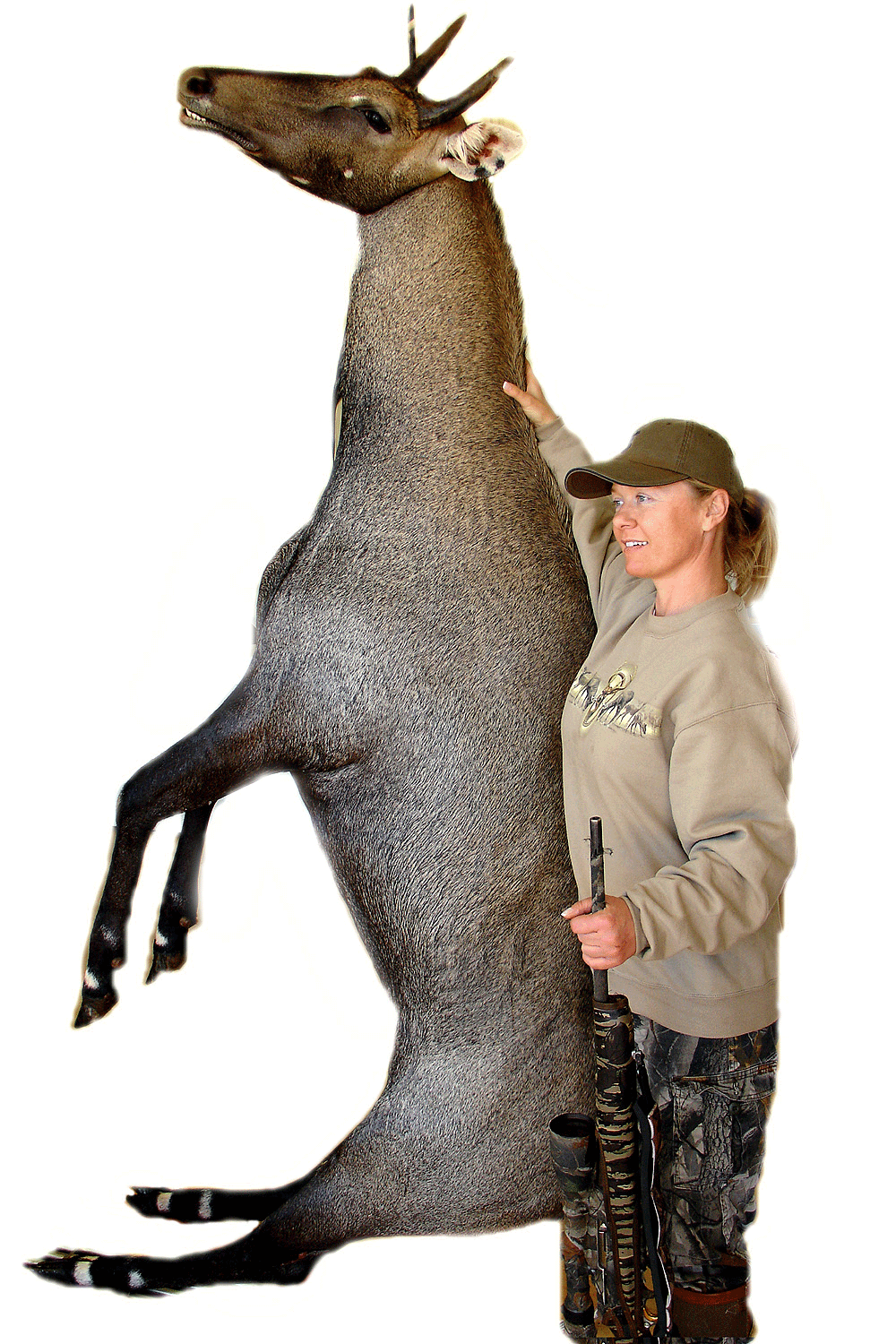|
|
|
|
|
Nilgai are a member of the Bovine family and the second largest member of the antelope family, closely related to the African spiral-horned Antelopes. Some people refer to the mature males as “blue bulls” as the dominant males typically become very dark, taking on a blackish and blueish hue. These are large sturdy animals with mature males weighing upwards of 800 pounds on the hoof. Trophy size males will normally sport vertically oriented horns measuring 8.5 to 10 inches in length. Females can weigh up to 275 pounds. The babies will weigh about 30 to 35 pounds at birth, and reach sexual maturity at about 18 months. More than 60 percent of Nilgai births bring twins. Grazing Nilgais sometimes lower themselves to their "knees", and when eating leaves they can stand on their hind legs for a short time. Nilgai have a lifespan of about 20 years.
Habits. Avoiding densely wooded areas, nilgai inhabit relatively dry areas of flat to rolling country with a moderate cover of thin forest or scrub. The South Texas brush country is ideally suited to these animals. Nilgai typically herd in small groups of about 10 animals although larger groups of 20-70 are occasionally seen. Males and females remain Blue bull meat is not at all gamey and quite similar to lean beef. This has been the demise of the Nilgai in Pakistan and Bangladesh. It’s a wild game some consider better than venison and is one of the best wild game meat you can have.
|


 Bulls weigh 275-600 lbs, with the
maximum about 660 lbs. Females weigh 240-460 lbs.
Bulls weigh 275-600 lbs, with the
maximum about 660 lbs. Females weigh 240-460 lbs.